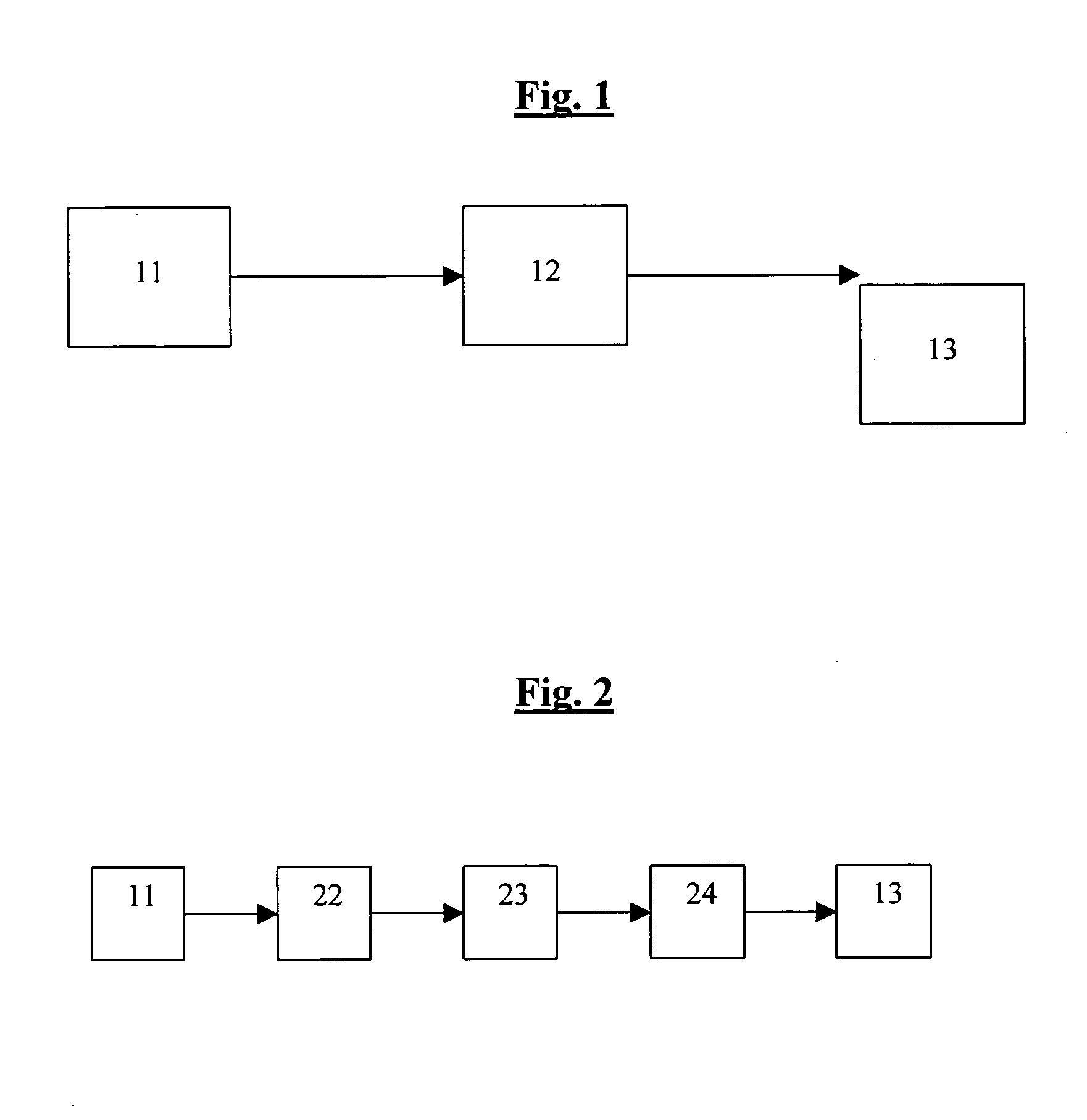System and method for secure communications
a communication system and communication technology, applied in the field of communication, can solve problems such as inability to respond with the correct code, inability to solve the problem completely, and reduce the problem inconsiderably
- Summary
- Abstract
- Description
- Claims
- Application Information
AI Technical Summary
Benefits of technology
Problems solved by technology
Method used
Image
Examples
Embodiment Construction
[0041] All of descriptions in this and other sections are intended to be illustrative examples and not limiting.
[0042] Referring to FIG. 1, I show a preferable example of a configuration using a trusted authority for verifying the receipt and preferably also the content of an email or fax message. The email message from the user's computer (11) goes through the trusted authority (12) on the way to the receiver's computer (13). The additional advantage of this is there can be an independent confirmation also of the content of the message, a feature which is lacking even in normal certified mail. As explained in the patent summary, this confirmation can be for example in the form of a certified copy returned from the authority, for example with various stamps or signature, and / or in the form of a record kept at the authority for example for 7 years, in case a later certificate is needed. The confirmation itself can be sent for example by a stamped return FAX or digitally signed email...
PUM
 Login to View More
Login to View More Abstract
Description
Claims
Application Information
 Login to View More
Login to View More - R&D
- Intellectual Property
- Life Sciences
- Materials
- Tech Scout
- Unparalleled Data Quality
- Higher Quality Content
- 60% Fewer Hallucinations
Browse by: Latest US Patents, China's latest patents, Technical Efficacy Thesaurus, Application Domain, Technology Topic, Popular Technical Reports.
© 2025 PatSnap. All rights reserved.Legal|Privacy policy|Modern Slavery Act Transparency Statement|Sitemap|About US| Contact US: help@patsnap.com


